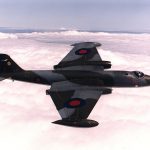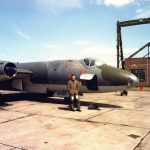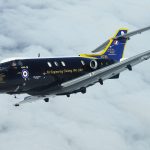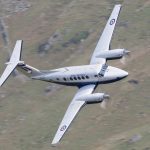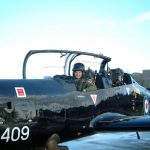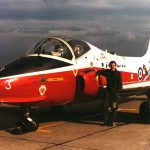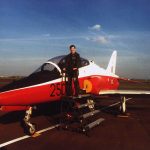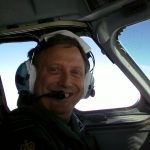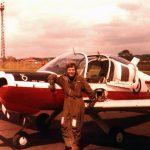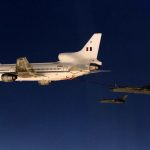G1000 RNP Approach Modes
The RNP approach types supported by the PA34 G1000 system are summarised in the table below:
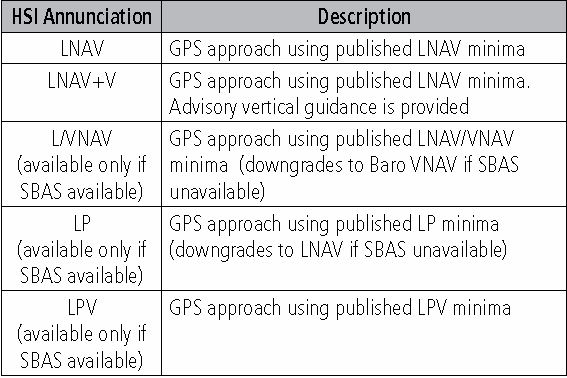
The Garmin system will automatically offer the best RNP Approach solution. So, if the airfield has been surveyed recently and LPV minima have been included in the database, then that is the approach solution that will be offered if SBAS is available.
Airfield that have not been surveyed recently may offer an LNAV/VNAV approach. Whilst our Seneca V aircraft do not have an altimetry system that supports BaroVNAV approaches, if SBAS is available, the system will offer an L/VNAV approach.
When carrying out a RNP approach, it is important to monitor the Flight Phase that is displayed in the centre of the HSI and to know the corresponding full-scale deflection value of the CDI.
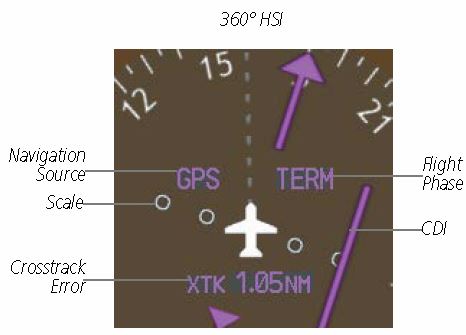
In this example the aircraft is 1.05nm left of track, so the CDI is at full-scale deflection. It is essential to ensure that the GPS CDI SELECTED function on the AUX – SYSTEM SETUP page is set to “Automatic” or the CDI scale may indicate an inappropriate value. The possible Flight Phases and their associated CDI full-scale deflections are listed below:
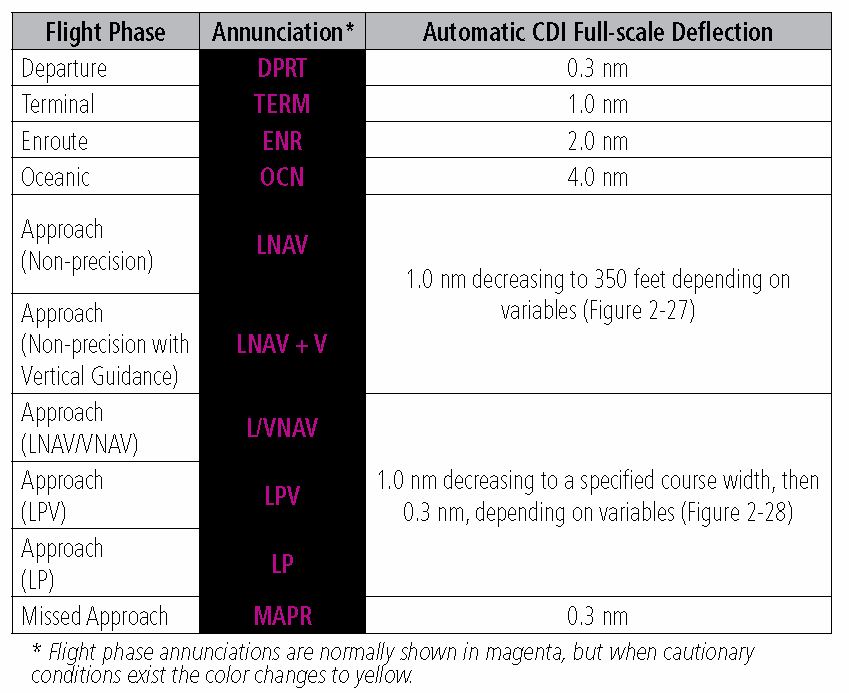
During LPV, LP and LNAV/VNAV approaches the CDI scaling will automatically change using the profile displayed in the following diagram:
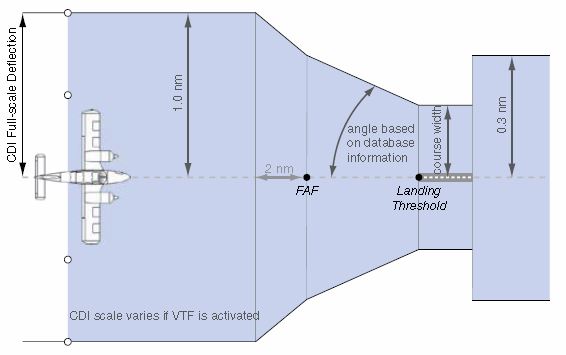
During LNAV and LNAV+V approaches the CDI scaling will automatically change using the profile displayed in the following diagram:
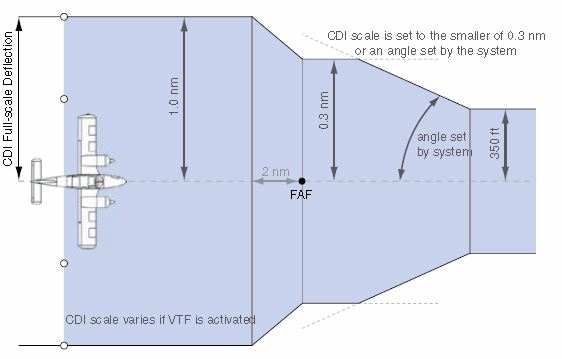
Notice that for all types of RNP approach, the Final Approach mode activates 2 nm before the Final Approach Fix. If the aircraft is not established on the centreline by that point, the Final Approach mode will not activate.
Not only does the G1000 start to adapt to the lateral component of the approach before the FAF, but if vertical guidance is available for the approach, it may also adopt the glidepath before the FAF in order to compensate for any altimeter error; such as outside air temperatures being above ISA.
Available RNP Approach Types
Approach Options. The G1000 system as implemented on the PA34 will only offer the best RNP approach type available for any particular destination. So if flying to Bristol with SBAS active and satellite coverage satisfactory, the only RNP approach type offered by the G1000 system will be an LPV approach. Although the lines of minima published for Bristol include LNAV/VNAV and LNAV, the system assumes that, if conditions are appropriate for an LPV approach, you do not need to have an LNAV/VNAV or LNAV approach amongst the available options. If conditions are not good enough for an LVP approach, the system will offer the next best option.
LNAV/VNAV Approaches. LNAV/VNAV approaches can take the form of either a V/LNAV approach (if SBAS is available) or a BaroVNAV approach (if SBAS is not available). However, the altimeter system fitted to the PA32 does not meet the specification requirements to permit BaroVNAV approaches.
AMC 20-27A Paragraph 7.2 Item 7: “The aircraft must display barometric altitude from two independent altimetry sources, one in each pilots’ primary field of view. When single pilot operation is permitted, the two displays must be visible from the pilot position.”
Advisory Vertical Guidance. If SBAS is available and conditions permit, the G1000 will offer advisory vertical guidance during non-precision RNP approaches (LNAV+V). However, the CDFA techniques used to fly the approach must be the same as those used for conventional non-precision approaches and regular altitude/distance checks are required rather than sole reliance on the advisory vertical guidance.
PA 34 G1000 Approach Hierarchy. The resulting hierarchy of RNP Approach types that will be offered during our operations, if conditions are satisfactory and lines of minima are published for that type of approach, are as follows:
If SBAS is Active only the best of the following RNP approaches will be selectable:
- LPV
- V/LNAV
- LNAV+V
If SBAS is not Active only the following RNP approach will be selectable:
- LNAV

